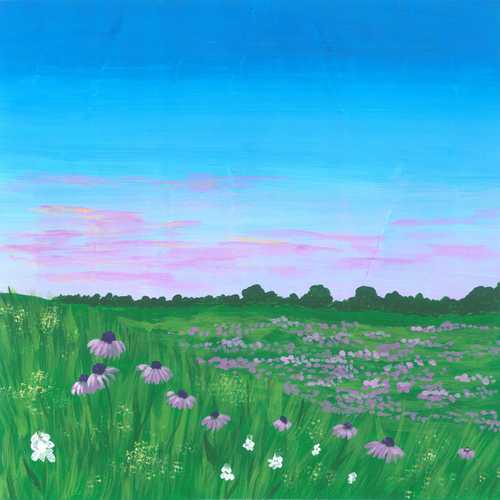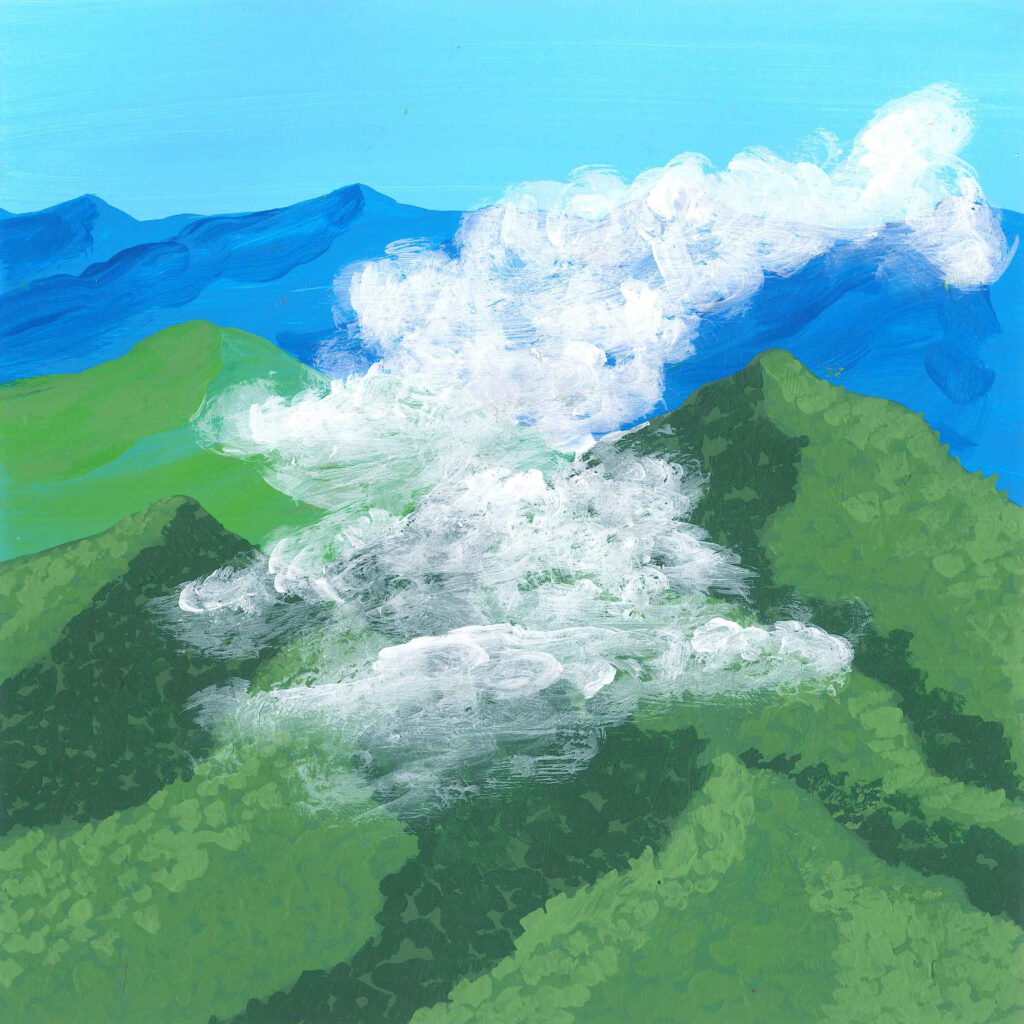
Ocean soundscapes, natterjack toads, and supporting bees | Newsletter #40
Latha math*, friend. 👋
Why are bees in danger and what can we do about it? Is it possible to cool down purely by listening to recordings of refreshing seascapes? (Probably not, but worth a try.) What would be the ramifications of deep-sea mining as a way to meet demand for ‘battery metals’? Could the adoption of sheep farming help the conservation of an endangered bird species in Kenya?
Read on to find out.
*A greeting in Scots Gaelic.
Soundscape of the week
‘Black Grouse Lek with Hissing and Cooing’:
No, these fascinatingly strange sounds aren’t an example of musique concrète produced by the BBC Radiophonic Workshop, though you’d be forgiven for thinking so. In fact, these futuristic-sounding burbles and rasping hisses (akin to the steam wand of an espresso machine) are made by the black grouse, a large, turkey-like game bird with a range spanning the whole length of Eurasia.
Pete Smith’s recording, from the Scottish Highlands, captures the species’ courtship ritual, when, on spring mornings, males compete with one another on a patch of ground known as a lek. On the basis of their performance of vocalizations, tail-fanning, and inflated necks, an audience of females choose the healthiest, most appealing males to mate with.
Articles and essays
🐝 “You may be surprised to find that there are many more types of bees than the […] varieties which we are most familiar with. Other families include burrowing bees, cuckoo bees, carpenter bees, mason bees, leafcutter bees, resin bees, mining bees, sweat bees, orchid bees, and plasterer bees. […] Around 550 known species are stingless, and at least one is massive. They are also far more diverse in appearance than we might expect; colorings include blue, green, purple, black, (black-and-) white – and even polka-dotted.”
‘Why Bees Are Important, and How We Can Help Them’ offers a summary of why we should care about bees (and other pollinators) – aside from the fact that, you know, “our world will slowly grind to a halt […] without [insects]” – why they are under threat (human rapaciousness, naturally), and what we as individuals can do to support them. A companion piece, coming soon, will suggest pollen- and nectar-rich flowering plants for each season, which can be planted in gardens, pots, or window boxes.
🌡️ Given this summer’s (terrifying) record-breaking temperatures, a refreshing dip in the sea may be in order. Unable as we are to provide this via your inbox, please accept the next best alternative: an earth.fm playlist of ‘Ocean Sounds’, which will transport you to wave-lapped coasts from Croatia and the Netherlands to Panama, Australia, and the Solomon Islands.
The most soothingly tranquil options include a (sonic) visit to Nova Scotia’s La Bloc Beach and the North Sea pawing at the Dutch coastline.

From the extended community
⛏️ “In the coming years, we’ll need millions of batteries: batteries to store renewable electricity and power a massive fleet of electric vehicles. But those batteries will require certain metals, and those metals have to be mined. And the mining industry can be a mess, sometimes associated with deforestation, child labor, and deadly floods of toxic waste.”
One option is that nodules containing battery metals could be collected from “the very bottom of the ocean, […] in some of the deepest, darkest, and most under-explored parts”. This episode of the How to Save a Planet podcast, ‘Should We Mine the Deep-Sea?’, considers the implications: “People worry that […] [this] could damage ocean ecosystems, and that’s especially concerning because we rely on the ocean for so much.”
Not to mention the incredible, alien-like lifeforms which inhabit the abyssal and hadal zones of the oceans, and about which we know so little: among them, vampire and bigfin squid, the Pacific barrel-eye fish (which can look upward through its own transparent forehead), the blind tripod fish, or the hydrothermal vents where single-celled lifeforms and extremophiles use chemosynthesis to convert the heat, gasses, and compounds from geothermally heated seawater into energy – supporting entire ecosystems which are untouched sunlight.
🐸 ‘Natterjack Toads’, episode 22 of the Nature Tripping podcast – “small audio trips outside to explore nature in Britain […] [featuring] a mixture of informative conversation and the sounds of the local surroundings and wildlife” – follows engaging hosts Jo Kennedy and Cathy Shaw as they explore Gronant and Talacre dunes to investigate the only Welsh population of this charismatic species of amphibian.
🐑 On the grassland plateau of Kinangop, ‘Sheep Offer a Livelihood for Kenyan Farmers, and a Lifeline for a Rare Bird’: Sharpe’s longclaw, an endangered species of bird endemic to the region. Mainly privately owned and used as woodlots or for farming livestock and potatoes, maize, and beans, only 1% of this 190,000 acre (77,000 ha) area remains suitable habitat for the longclaw, where clumps of tussock grass have historically provided shelter, nesting, and protection from predators.
Now, Friends of Kinangop Plateau (FOKP) is encouraging the area’s private residents to transition to sheep farming: crops have not thrived on the plateau, and wool is not only more lucrative, but has the additional benefit of allowing grassland to be maintained to the benefit of Sharpe’s longclaw and other endangered species. In partnership with Nature Kenya, FOKP has also fundraised enough to establish four nature reserves, totalling nearly 500 acres (200 ha) – successes which are being replicated elsewhere in Kenya.
👉 Follow us on Twitter for a daily dose of nature-sound inspiration!
How to support earth.fm
All 600+ of our curated, immersive soundscapes are free to listen to, but if you want to help us grow new forests, please become a supporter!
There are three options available, and you will also be able to favorite recordings, create and share playlists, and many other perks – plus a big surprise is coming exclusively to members in the next few weeks!
Until next time, we wish you a regenerative week. 🙏
With best wishes,
Neil and Team earth.fm
Reach out on hello@earth.fm 👋
Forward this newsletter to anyone who would appreciate it ✉️
Join the conversation with the Earth.fm community 🤝
Submit a recording 🎤
Follow us on Twitter. Instagram and YouTube 💻
Listen to nature sounds in your browser by installing our free extension 🎧
Earth.fm is a completely free streaming service of 1000+ nature sounds from around the world, offering natural soundscapes and guided meditations for people who wish to listen to nature, relax, and become more connected. Launched in 2022, Earth.fm is a non-profit and a 1% for the Planet Environmental Partner.
Check out our recordings of nature ambience from sound recordists and artists spanning the globe, our thematic playlists of immersive soundscapes and our Wind Is the Original Radio podcast.
You can join the Earth.fm family by signing up for our newsletter of weekly inspiration for your precious ears, or become a member to enjoy the extra Earth.fm features and goodies and support us on our mission.
Subscription fees contribute to growing our library of authentic nature sounds, research into topics like noise pollution and the connection between nature and mental wellbeing, as well as funding grants that support emerging nature sound recordists from underprivileged communities.

